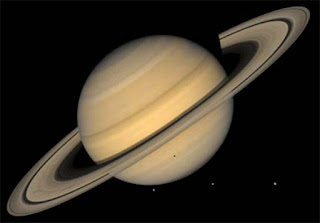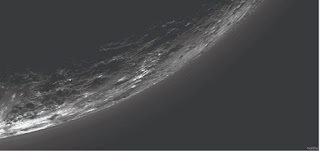Saturn and Pluto Still Troubling Secularists
Whenever we have to deal with secular stories of origins, we are confronted with errors in science, ignored facts, poor reasoning, and contradictory conjectures. We have seen numerous times where believers in hydrogen-to-human evolution have been stymied by observations that do not fit their expectations.
The rings and moons of Saturn are vexatious to secular cosmologies in several ways, especially when attempting to account for their formation and deny their youth — at least, "young" in comparison to alleged billions of years. Pluto is also uncooperative with secular schemes.
 |
| Saturn, some moons, rings image credit: NASA (Usage does not imply endorsement of site contents) |
A recent article in Sky & Telescope magazine explains why secular theorists have difficulty agreeing on the ages of Saturn’s moons. In the process, the article provides a reminder that Saturn’s rings are young. It also presents possible evidence that some of Saturn’s moons are also young. Most important, it highlights the fact that (incorrect) secular origins stories spanning alleged histories of billions of years are almost certain to contradict themselves.The article begins by briefly describing two main arguments for Saturn’s rings being young: the cleanness and brightness of the rings, as well as the fact that the rings are being destroyed fairly quickly.1 Both of these arguments for a young ring system have been discussed in previous Creation Science Updates. Some secular scientists are insisting that the maximum possible age for Saturn’s rings is about 100 million years. Of course, the rings could be younger than this, even as young as 6,000 years, in agreement with the testimony of Scripture.
To read the rest, see "Saturn’s Moons Continue to Challenge Secular Theorists". Don't forget to come back for the articles on Pluto — if only to experience the atmosphere.
If Pluto had feelings, it might be very insulted. First, downgraded from a planet to dwarf planet — a Trans-Neptunian Object because the definition of planet was changed. Pluto is a system, including the moons Charon and four smaller ones. None of this fits cosmic evolution speculations, and Pluto's geological activity baffles secularists. Then there's the problem of atmosphere.
 |
| Haze layers above Pluto image credit: NASA / JHUAPL / SwRI (Once again, usage does not imply endorsement of site contents) |
Scientists at Southwest Research Institute watched Pluto occult a star on the night of August 18, 2021. This allowed them to measure the height and density of Pluto’s thin atmosphere. The press release says:Like Earth, Pluto’s atmosphere is predominantly nitrogen. Unlike Earth, Pluto’s atmosphere is supported by the vapor pressure of its surface ices, which means that small changes in surface ice temperatures would result in large changes in the bulk density of its atmosphere. Pluto takes 248 Earth years to complete one full orbit around the Sun, and its distance varies from its closest point, about 30 astronomical units from the Sun (1 AU is the distance from the Earth to the Sun), to 50 AU from the Sun.If Pluto is 4.5 billion years old, simple division shows that it would have orbited the sun over 18 million times by now. This implies that the atmosphere has warmed and frozen that many times, too.
You've already read about half of that post. To finish, see "Can Pluto’s Atmosphere Last Billions of Years?" HOWEVER, we have one more to consider where Dr. Faulkner taps the brakes. He says that the atmosphere may not necessarily indicate its age.
When the New Horizons space probe flew past Pluto in 2015, it obtained a good density profile (density as a function of altitude) of Pluto’s thin atmosphere. We have known for more than three decades that Pluto has an atmosphere. How did we know this? Pluto’s orbit occasionally causes it to pass in front of a star as seen from earth, an event we call an occultation. An occulting body with no atmosphere will cause the light of the star to wink out very abruptly and then suddenly reappear a few minutes later when the star emerges from behind the body. But if a body has an atmosphere, even a thin one, the star’s light will fade out and recover more gradually. By studying how starlight dims and recovers during a Plutonian occultation, scientists can deduce some information about Pluto’s atmosphere. This was first done in 1988, and it has been repeated several times since (suitable occultations are not that common, usually happening every few years).
To read the rest, see "Easy Come, Easy Go: Pluto’s Changing Atmosphere".